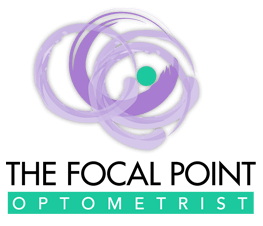Dry Eye Diagnosis and Treatment
Dry eye syndrome (DES) is a chronic condition that develops when your eyes do not produce and maintain enough tears to keep the eye's surface lubricated.
Tears are essential for keeping your eyes healthy and comfortable. They help to wash away dirt and debris, protect your eyes from infection, and keep your eyes hydrated. When you don't have enough tears, your eyes can become dry, irritated and uncomfortable.
Symptoms of Dry Eye
Dry eye syndrome (DES) is a common condition that affects millions of people worldwide. It occurs when your eyes don't produce enough tears or when the tears evaporate too quickly. This can cause a number of uncomfortable symptoms, including:
- Dry, itchy eyes
- Burning or stinging
- Irritation
- Sticky or watery eyes
- Blurred vision
- Pain
- Foreign body sensation
Sometimes, in an effort to fight off the condition, your eyes can produce excessive tears, which is why some DES sufferers experience watery eyes.
What Causes Dry Eye?
Dry eyes can be a real pain, both literally and figuratively. But don't worry, you're not alone. Millions of people around the world suffer from dry eyes, and there are a number of things you can do to manage the condition. There are a number of factors that can contribute to dry eyes, including:
- Ageing: As we age, our tear production naturally decreases.
- Medications: Certain medications, such as antihistamines, blood pressure medications, and antidepressants, can reduce tear production.
- Environmental factors: Dry air, dust, and wind can all dry out the eyes.
- Contact lenses: Wearing contact lenses for extended periods of time can also contribute to dry eyes.|
- Medical conditions: Certain medical conditions, such as diabetes, blepharitis, lupus, arthritis, and thyroid problems, can increase your risk of dry eyes.
- Eye surgery: LASIK and other eye surgeries can also cause dry eyes.
- Lifestyle factors: Smoking and diet preferences
Diagnosis of Dry Eye Syndrome
Dry eye syndrome can be diagnosed through a comprehensive eye exam. Your optometrist may also perform one or more tests to measure tear production and tear quality.
Tear break-up time (TBUT) test: This test measures how long it takes for your tears to evaporate from the surface of your eye. A low TBUT score may indicate a deficiency in the lipid layer of your tears, which is important for preventing tear evaporation.
Schirmer test: This test measures tear production. A strip of filter paper is placed under your lower eyelid, and you are asked to close your eyes for five minutes. The amount of moisture on the strip is then measured. A low Schirmer score may indicate that you are not producing enough tears.
Treatment for Dry Eyes
The good news is that there are many treatment options for dry eye syndrome, depending on the cause and severity of the condition. Mild cases can often be managed with over-the-counter artificial tears or lubricant eye drops. If over-the-counter drops are ineffective, your optometrist may prescribe prescription eye drops that stimulate tear production or reduce inflammation.
More severe cases of dry eye syndrome may be treated with punctal plugs, which are small inserts that block the tear ducts and prevent tears from draining away too quickly. Other treatments may include heated compresses, eyelid scrubs and antibiotic ointments.
In some cases, dry eye syndrome can be caused by certain medications. If possible, your optometrist may recommend switching to a different medication or adjusting the dosage.
Contact lens wearers may also experience dry eye syndrome. If you wear contact lenses, your optometrist may recommend limiting or refraining from contact lens use or switching to a different brand or type of contact lens.
Preventing Dry Eyes
If the cause of your dry eyes is external or environmental, eliminating those elements may solve the problem and resolve the symptoms. Here are some tips:
- Avoid dry environments, hair dryers, heaters, and fans (particularly directed toward the eyes).
- Avoid smoky environments and wear eye protection such as wrap-around glasses or goggles in dusty or windy areas.
- Use a humidifier to add moisture to dry indoor air.
- If working on a computer or watching television, make sure to blink purposefully.
- Avoid rubbing your eyes.
- Stay hydrated by drinking at least 8 to 10 glasses of water per day.
Dry eye disease doesn't usually cause permanent vision damage but can be uncomfortable and irritating. Fortunately, numerous treatment options exist to enhance moisture and comfort. Your optometrist will collaborate with you to develop a long-term strategy to maintain your eye comfort.
